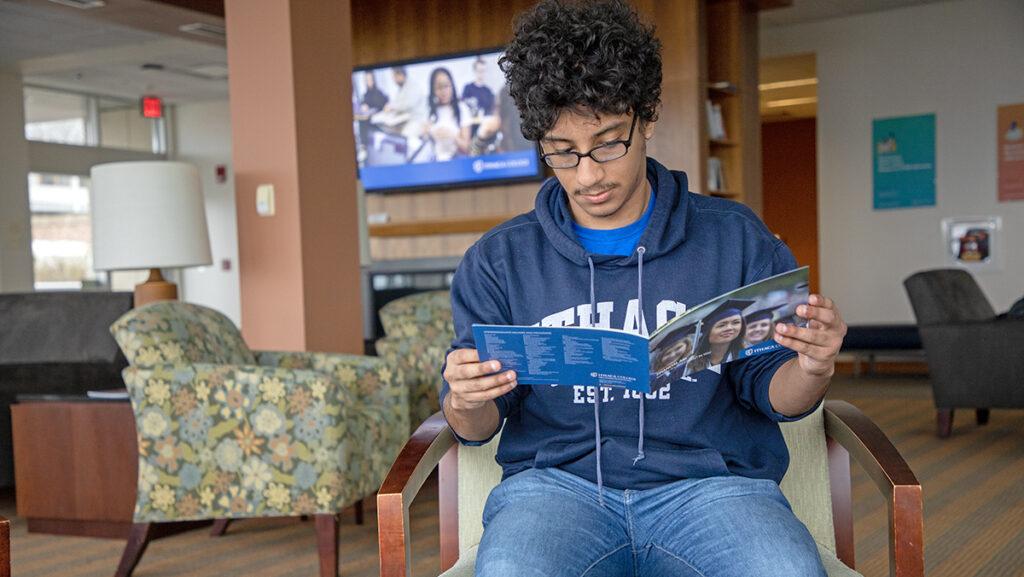In Fall 2020, 67% of all first-year students at Ithaca College received need-based aid, but upon receiving financial aid packages, some students have had trouble understanding how much their aid will cover.
Many colleges have had issues communicating the amount of financial aid that a student receives upon admission to the college, according to Higher Ed Dive. Ithaca College offers a net price calculator, which creates an estimate of the total cost of attendance for a student.
The cost of attendance for 2023–24 at the college is $65,910, before financial aid, but is $34,554 on average after financial aid according to College Scorecard.
The Government Accountability Office, which looks into how clearly colleges communicate financial aid information, reviewed 176 college acceptance letters in 2021. An estimated 41% of colleges do not include a net price, how much out of pocket someone pays, in their offer letters and an estimated 50% understate the net price, according to the GAO.
Shana Gore, executive director of Student Financial Services at Ithaca College, said SFS is continuing to work toward making the financial aid package easier for families to understand.
Gore said SFS has implemented the Four-Year Financial Forecast, which aims to help students and families feel more secure about financial aid by detailing the amount of aid a student will get for the next four years. Families were invited on a video call to talk to someone from SFS about their financial aid package.
“I think showing a student and family how we got to those numbers is important,” Gore said. “We try to break it down into a little more detail. … You will find some schools that are doing something similar, whether it’s a tuition freeze or being able to guarantee a certain amount. … I also think when we were looking at this redesign of the financial aid package, we reviewed packages for many different schools to try to find places who were doing things [well].”
Gore said that one of the main reasons families are having issues with understanding financial aid offers is the lack of consistent language in award letters. Gore said SFS will show the types of financial aid that would be helpful and relevant to the student.
“I think one of the steps that we’ve taken here is to show students just what’s relevant to them,” Gore said via email. “[SFS is] trying to make things more personalized, so that the students only receive information that they really need as opposed to all of this possible information that they have to read through and then try to figure out what actually applies to them.”
Megan Walter, policy analyst at the National Association of Student Financial Aid Administrators, said via email that NASFAA has worked to make the financial aid process easier to understand for families by creating a set of guidelines that colleges should follow when making and distributing financial aid offers.
“Until now, there have been no enforceable standards, guidelines or principles when institutions create their financial aid offers,” Walter said. “So, those offers can vary widely between colleges, with each using its own terminology, inadvertently making an inherently confusing process even more difficult. Maintaining some level of flexibility in communicating financial aid offers is important, as different colleges have different student populations that they may need to tailor their aid offers to.”
Some colleges do not use language in their financial aid letters that can be understood by families with little knowledge about the financial aid process, according to The Chronicle of Higher Education.
Both low-income and first generation students struggle with financial aid because of the lack of information that is provided to them, according to a report from the National Association for College Admission Counseling.
Junior Jordan Garcia said that when he received his first financial aid package in 2020, before committing to the college, he was initially concerned about how much aid he was going to receive. Being a first-generation college student, Garcia said his parents did not understand how the financial aid process works and he said colleges should structure their reward letters in a way that students can better understand the aid that they are receiving.
Garcia said he had access to resources that guided him through the process, like the Latino U College Access, an organization that assists first-generation Latino students during the college application process.
“You can’t give an 18-year-old a letter that has all these numbers and data and information about how much they’re gonna get and expect to understand that you need to accommodate them in a way to make sure they can fully understand what they’re exactly getting and how they’re gonna have to pay it off,” Garcia said.
First-year student Grace Walton said her mother could not pay all of her tuition each year and wanted to make an financial aid appeal. While Walton received an email from SFS offering to walk her through the financial aid process, she said the link did not work and decided to contact the SFS office the summer before her first year, but was met with long wait times.
“It was very confusing and one thing that I think colleges might not understand … for first-gen students and anyone really our age is that we can see that money, that financial aid package, on paper or on screen, but it’s so impossible to comprehend that much amount of money that you will be paying,” Walton said.
Once Walton managed to speak to someone in SFS, she said she was immediately rejected for an appeal and said she felt no one was listening to her situation. Walton said she will be transferring to the University of Michigan in Fall 2023 because the university was able to give her a financial aid offer that would be more manageable for her family.
“My mom was able to help me for this one semester only,” Walton said. “As much as they would like to predict what you’ll be paying for the four years … it almost felt pointless.”
Prospective student Amanda Hopko said that, compared to other schools she has received financial aid packages from, Ithaca College has made the process as clear as possible.
“Well, I think [transparency] is important,” Hopko said. “It lets the students and the parents have as much information as possible and kinda let them know what they’re getting into.”
Incoming first-year student Janelle Harris said the Four-Year Financial Forecast was helpful when choosing the college and said that she appreciates how clear the forecast was in presenting the financial information.
“It’s different for every college,” Harris said. “Some colleges are giving you the Four-Year Financial Forecast while some colleges are not, and with a lot of colleges, the cost goes up every year, especially the cost of tuition.”
Gore said via email that the college will continue to help students through scholarships, payments and grants. Additionally, she said students can also use campus resources like the Student Emergency Relief Fund or Prunty’s Pantry.
“If we can’t find a solution to the financial challenges and a student decides they need to leave IC either temporarily or permanently, we partner with the Center for Student Success and Retention (CSSR),” Gore said. “CSSR will discuss with the student all options related to taking a Leave of Absence and/or transferring to another school, to assist students with making an informed decision. “








